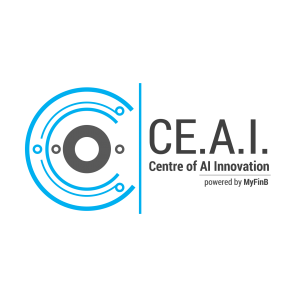For a layperson, Artificial Intelligence (AI) is a buzzword. Useful in the tech field but just a label in others. It is not. Artificial intelligence is an underutilised technology that can create greater value for brands.
It has the potential to answer and solve the lion’s share of challenges in influencer marketing campaigns – Are we choosing the right creator? Will the creator deliver effective content? How do we scale with influencers?
Identify influencers swiftly and accurately with AI
Force-fitting brand and creator never works. Effective influencer marketing campaigns start with finding the right creator. Matching the correct creator to a brand goes beyond subjective keyword search. It requires objectively analysing every element of every content by every shortlisted creator.
Let’s say a creator self-categorises under lifestyle. A search of their content shows that their posts are equally divided between travel and sustainability. A closer look reveals that travel-related posts feature kids and talk about parenthood. So, while this creator would be in synergy with a brand promoting kid-friendly travel, they will not be the optimal choice for solo travel.
What is the problem with conducting this due diligence in accurately categorising creators? The weeding requires 1000s of hours devoted to manually scrutinizing the creator database.
AI does in hours what a person would do in weeks
Most brands make blind investments in influencer marketing because finding the correct creator means time-consuming hard labour. Let’s say a brand has to find one creator from a relatively small database of 5000 influencers.
They will have to sift through all the posts of each creator, which, keep in mind, is not static but ever-growing. And within each content piece, they’ll have to read through the tags to gain context.
It would take weeks if not more for a person to find a creator befitting the campaign. AI can solve this Herculean task in a few hours by processing the data faster, letting a brand make an informed decision.
Take, for example, IBM Watson Natural Language Understanding. Along with Personality Insights and Tone Analyzer APIs, the AI has been used to analyse potential influencer candidates and “to fully understand the demographics that make up an influencer’s audience.”
AI methodically vets influencers for relevance
Human selection is biased, subjective and inaccurate. That’s why even after thorough vetting, a subsection of influencer marketing campaigns are troubled with fraud. Bots, and inflated following waste over 15% of influencer marketing budgets.
AI can crawl through creators’ contextual engagement, post frequency, and audience growth to shortlist only genuine creators. Not to mention, it can further vet relevant creators using image recognition technology.
For instance, Amazon Rekognition object and scene detection can identify all the various objects that comprise an image or video. Why is this important? Because the performance of a post is not limited to one element.
The audience reacts to every object in the content. While one person may like the background, another may respond to the outfit in the image. AI is the gateway to this unparalleled data – understanding how followers respond to specific elements so as to build more effective content.
AI use-cases for marketers
Assume a brand wants to collaborate with a postpartum fitness creator in Delhi. For a marketer, identifying an influencer who fits this bracket through generic tags and categories is not easy.
They’ll find fitness creators. They’ll find female fitness creators. They’ll even find creators who are mothers. But manually winnowing through lakhs of creators in Delhi to discover a postpartum fitness influencer would require months. AI, in contrast, can comb for objective keywords like #post-partum and #fitness at lightning speed. With a better taxonomy on creators, the marketer can find the exact fit in mere hours.
Another way AI helps with influencer campaigns is through label detection. Often creators forget to tag brands. Manually finding these posts in a sea of content is impossible. But if you want to track an influencer campaign’s efficacy, you must have an accurate picture of the entire coverage. With AI, brands can detect their logos or products in social media posts, eradicating the need for tags.
Lastly, AI offers brands a ready repository of content with UGC. User-generated content is the best form of promotion. But it necessitates human moderators to review the content for inappropriate or offensive material. While marketers can do it on their own, the speed and quality remain insufficient. Through machine learning, brands can moderate UGC to find relevant content for organic campaigns at scale.
The verdict
Influencer marketing works. That is not in question. But using the same subset of creators for all campaigns is doing a disservice to the brand. Further, given the fragmentation of consumers, it’s imperative to leverage nano and micro-influencers, who are experts in their niche.
This requires brands to look for a new creator with each new campaign. It’s akin to searching for a needle in a haystack, not once but multiple times. AI can bulldoze these problems and prevent a brand from haemorrhaging money on ineffective creator collaborations.
Source: Financial Express Online


